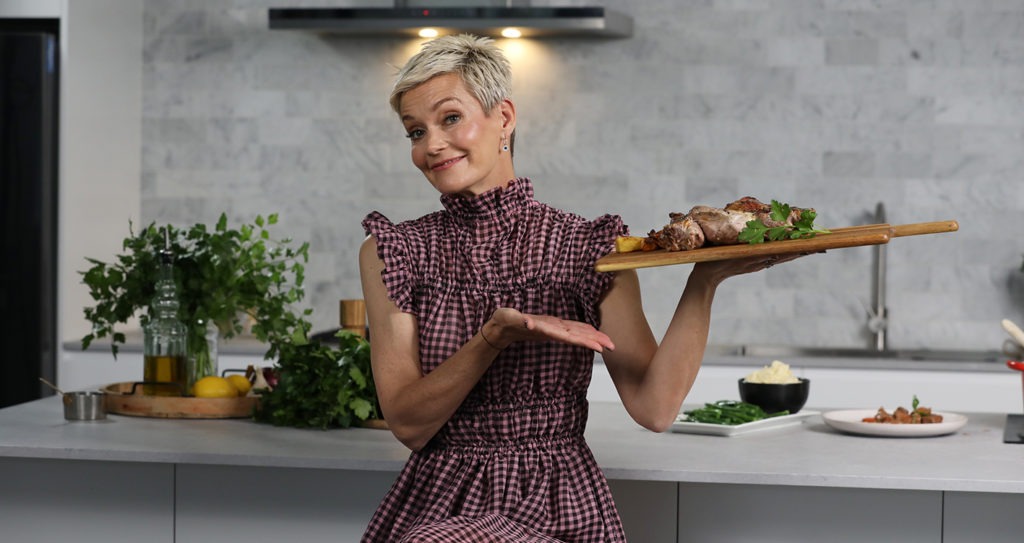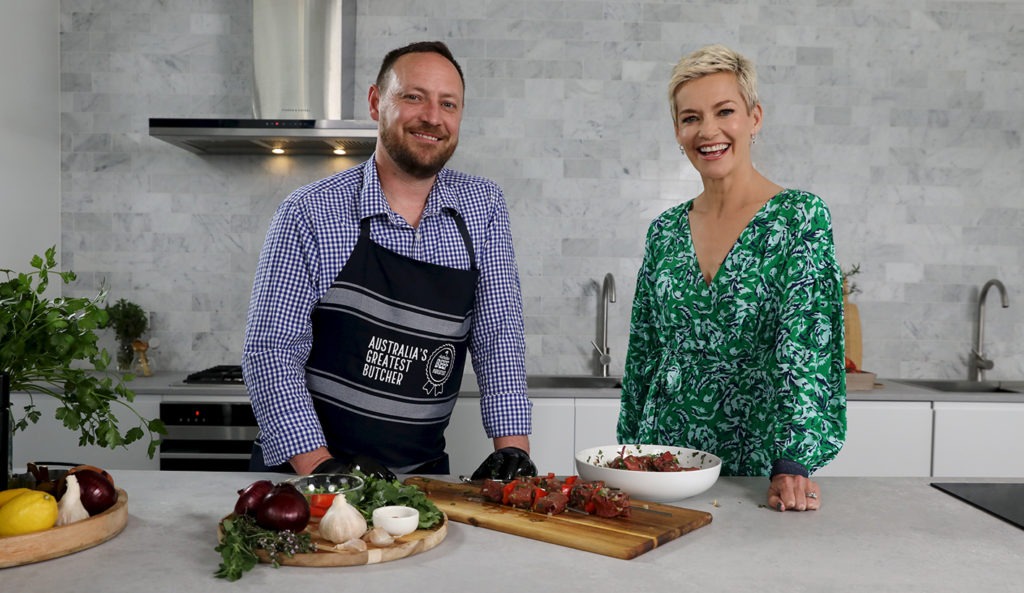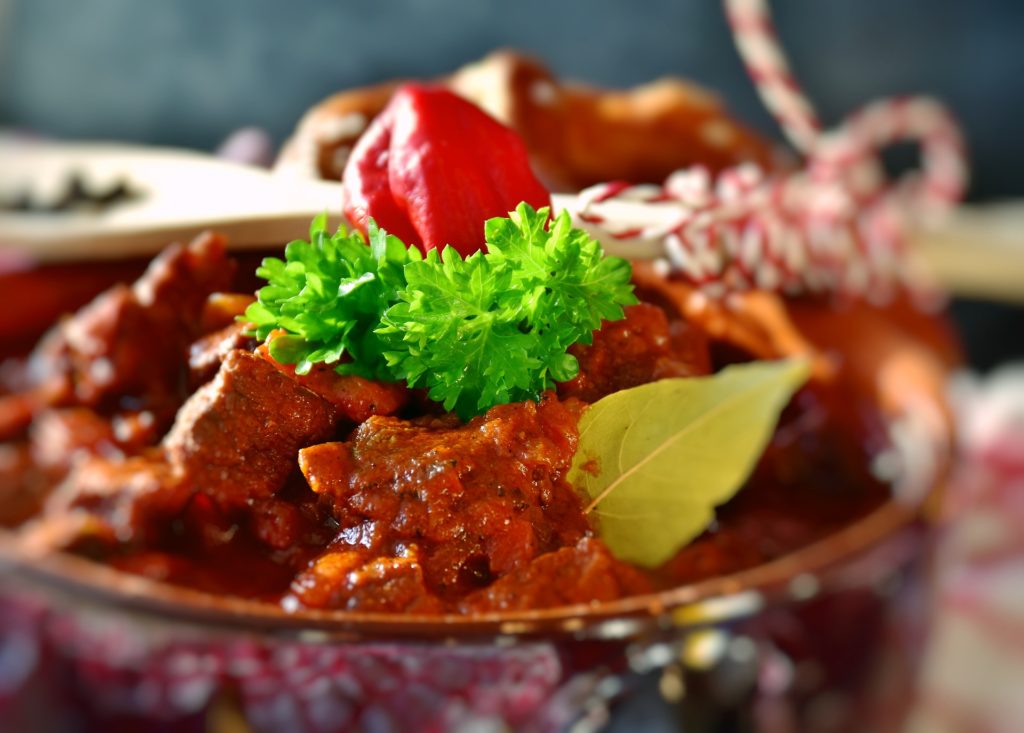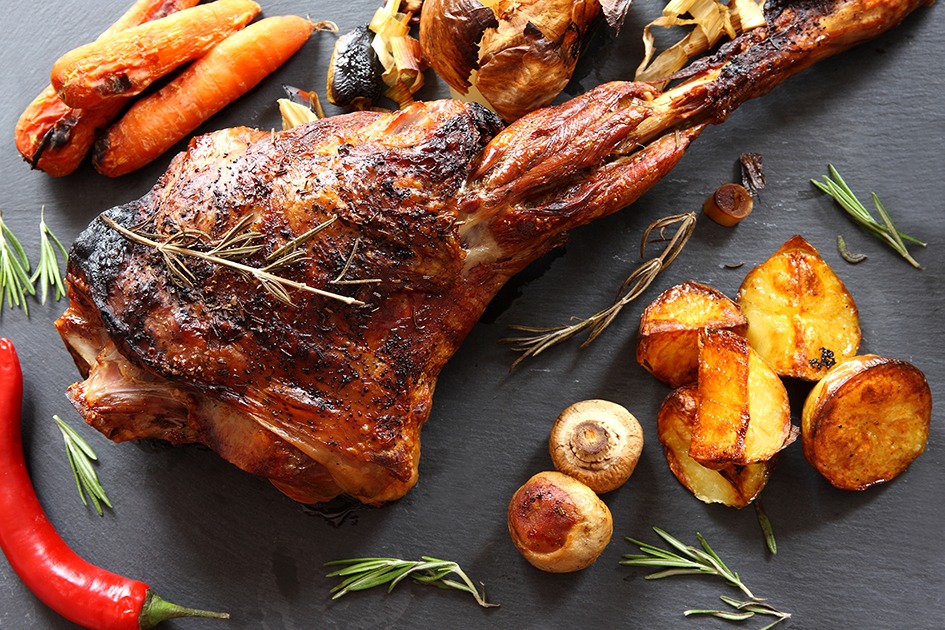Get to know your butcher this November
There are plenty of benefits to buying your meat from a local butcher rather than a soulless supermarket aisle. This November, Meat & Livestock Australia’s Australian Butchers Guild Program is celebrating Australian independent butchers by partnering with self-professed “crap housewife” and media personality Jessica Rowe, to share Aussie butchers’ tips and tricks to help you make the most of your summer lamb and beef.
As part of the Greatest Butcher on Your Block campaign, Rowe spent time in the kitchen with some of Sydney’s finest butchers, who’ve been teaching her a variety of simple meat preparation and cooking skills for a special online Ask Your Butcher video series.
“Many people know through my website that I’m a shocking cook,” Rowe admits. “But each time I meet a butcher, I learn a bit more. Butchers are such a great source of knowledge. They prepare easy-to-cook cuts and always have suggestions for meals. It’s really worthwhile getting to know your local outlet. Plus, your cooking will improve. Trust me!”

Butchers thrive in lockdown
While COVID-19 lockdowns might have had a negative impact on other areas of the food industry, increased interest in home cooking has been good news for the butcher business.
“The strange panic buying of 2020 left us a bit unprepared for the wave of customers and the amounts of meat that were in demand once COVID hit,” admits butcher Steve Rosevear of Steve’s Fine Meats in Sydney’s Carlingford (pictured top with Rowe). “But we worked day and night, and did our best to meet demand.”
Rosevear says his work has been more hands-on with customers this year as a result, saying the most rewarding moments are when customers come back and thank him and his team for supplying the perfect cut of meat, or giving them cooking instructions or advice.
“I also try to help customers get the most value out of cuts,” he says. “For instance, I tell people if you’re carving a roast leg of lamb, once all the meat is off, the bones can be frozen and used at a later date for a bone broth.”
Butcher Brad Callaghan from Auburn Meadow Meats in Sydney’s Rose Bay says the increased interest in plant-based meat alternatives of late has not deterred customer demand for quality cuts of the real McCoy.
“I still get a lot of enjoyment out of selling ‘real meat’, and lamb cutlets along with eye fillet steak have been our best-sellers this year,” Callaghan says. “My best tip is that browning beef or lamb before adding the pieces into a casserole, curry or stew is the best way to ensure juicy, succulent meat packed full of flavour.”

Expert meat tips from local butchers
How to make the perfect kebabs
Mark Rogers, Stapleton’s Quality Meats
1. Cut meat to even-sized cubes; 2-3cm thick is ideal.
2. Thread meat on skewers*, with even amounts on each side of skewer.
3. Add vegies between meat pieces on the skewers, to add moisture to the meat. The vegies can also act as a guide when cooking the meat.
4. Bring your BBQ, hot plate or frypan up to medium heat.
5. Try to avoid continually turning the skewers – look to cook each side only once for about 8 minutes, until a nice “char” is achieved.
6. Do the tong test to check the meat is done: if it springs back, it’s ready. The firmer the meat, the more well-done it is.
7. Rest your skewers for a few minutes before serving.
*Metal skewers are best as they’re reusable. If you only have wooden, make sure you soak them in water before using them, so they don’t burn during cooking.

How to brown casserole or curry meat to perfection
Brad Callaghan, Auburn Meadow Meats
1. Dice your beef or lamb into even cubes; 2-3cm thick is ideal. Place a small amount of oil into a casserole pan*, on a medium heat
2. Add meat to flour salt and pepper in a zip lock bag. Shake together until meat is covered.
3. Add meat cubes to the pan. The meat needs to sizzle as it hits the pan – the aim is to sear the meat to lock in flavour. If it doesn’t sizzle, the pan isn’t hot enough. You may need to cook meat in batches, depending on pan size. This stops the meat from stewing.
4. Cook until all your meat is browned. Return all meat batches to the pan and start to add in your other ingredients.
* Use the same pan throughout – this keeps all the flavours (and saves on washing up).

How to carve a leg of lamb like a pro
Steve Rosevear, Steve’s Fine Meats
1. After allowing your leg of lamb to rest, turn it over and slice off the underside piece of meat, ensuring you keep the knife* hard against the bone. Put this to one side.
2. Turn the leg back over, remove the shank and run your knife down the middle of the leg, keeping the point of the blade hard against the bone leg.
3. Ensure you cut along both sides of bone, dividing remaining section of lamb into two.
4. You should now have two pieces of meat. Take each piece and cut against the grain, into manageable sizes for serving.
* Make sure your knife is sharp, to make carving safer and easier.
You can check out The Greatest Butcher on Your Block campaign page here.









